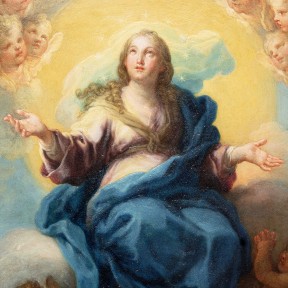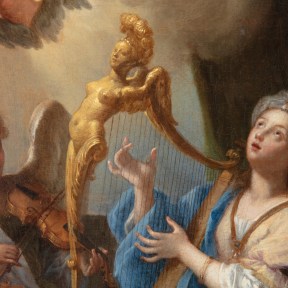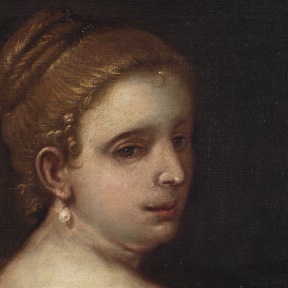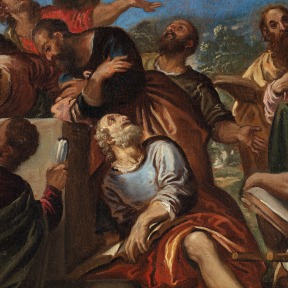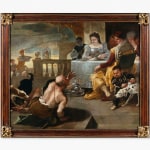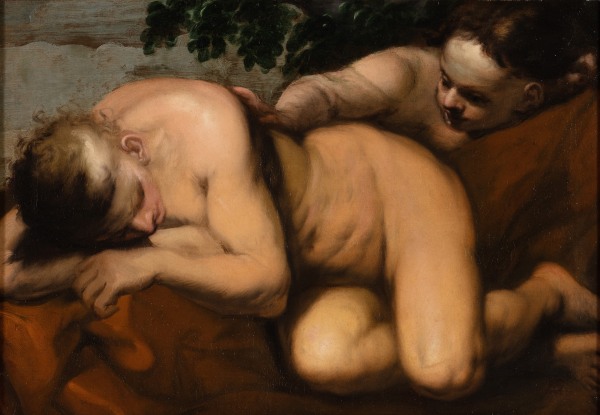-
Biography
Luca Giordano (Naples, Italy 1634 – Naples, Italy 1705)
Born in Naples in 1634, he was the son of painter Antonio Giordano. Already in 1650, he was apprenticed to the Spanish painter Jusepe de Ribera, who greatly influenced his early works.
Also known by the nickname "Luca Fapresto" (Luca Do It Quickly) for the extraordinary speed with which he completed his work, his prolific production of artworks embraced many themes, influenced by all the main seventeenth-century pictorial trends.
The first artistic phase of the Neapolitan painter was very similar to the style of Caravaggio and the naturalism of Jusepe de Ribera. Following a period of studies in Rome, Parma and Venice, his style underwent a profound change. It abandoned sober drama in favour of a more decorative approach, seeking to blend Venetian and Roman influences.
An established decorator, he received numerous, prestigious commissions from Florence and Naples.
In 1692, he was invited to Spain by Charles II, staying for ten years at the service of the king.
He returned to Naples in 1702, following the death of Charles II. He received so many commissions that he opened a workshop. Helpers and collaborators developed drawings and sketches provided by the master or completed works begun by him. In other cases, Giordano intervened at the end of the work done by the students, with a few brushstrokes.
The last canvases commissioned show a return to the chiaroscuro of his early days.
He died in Naples in 1705.
Photo UniCredit Group (Sebastiano Pellion di Persano)
-
Works
Luca Giordano Italian, 1634-1705
La cena del ricco Epulone, 1663Oil on canvas / Olio su tela / Öl auf Leinwand78 x 95 1/4 in
198 x 242 cmUniCredit S.p.A.Photo: UniCredit Group (Sebastiano Pellion di Persano)Further images
Join our mailing list
* denotes required fields
In order to respond to your enquiry, we will process the personal data you have supplied in accordance with our privacy policy.



